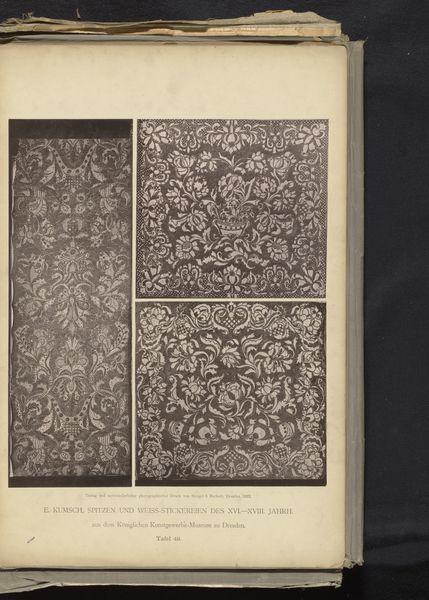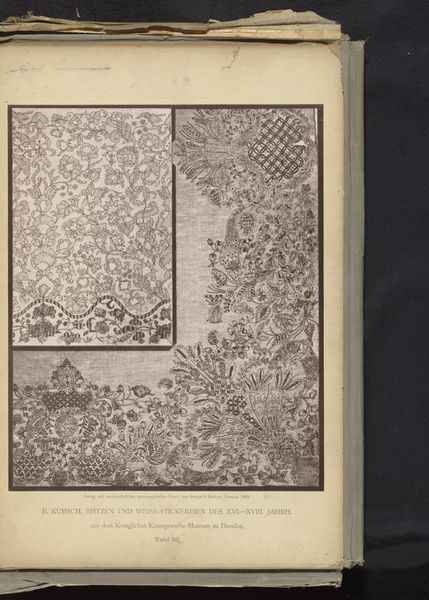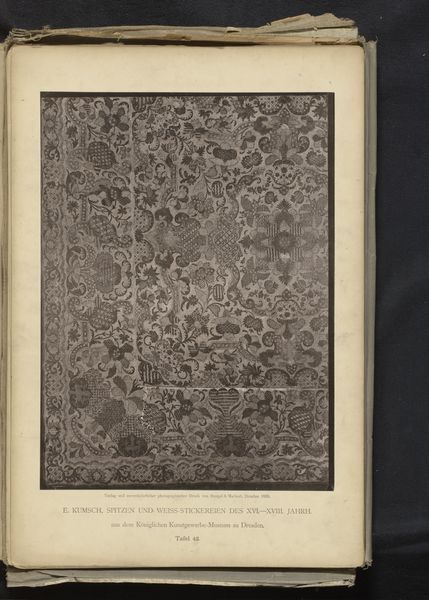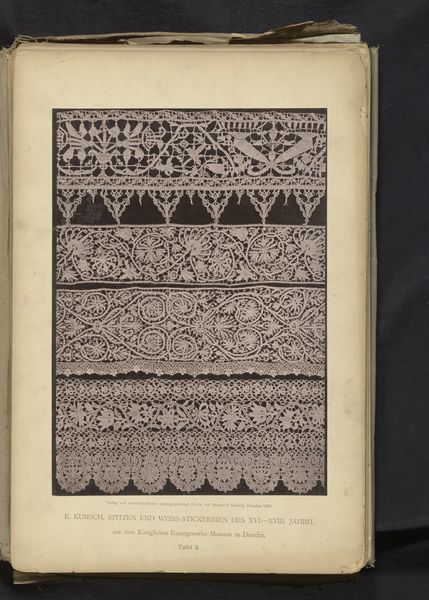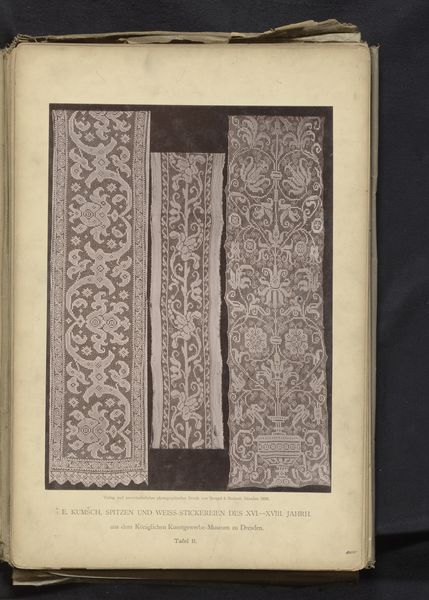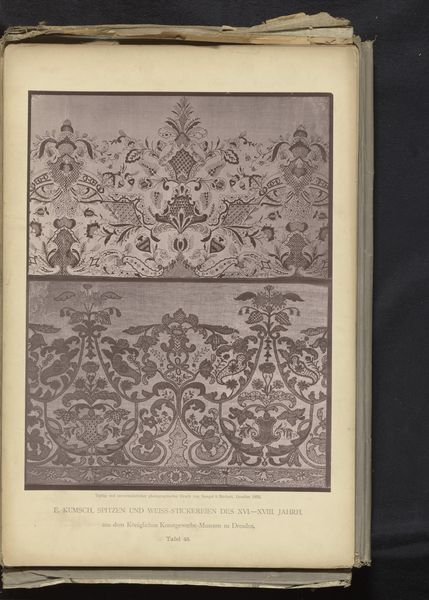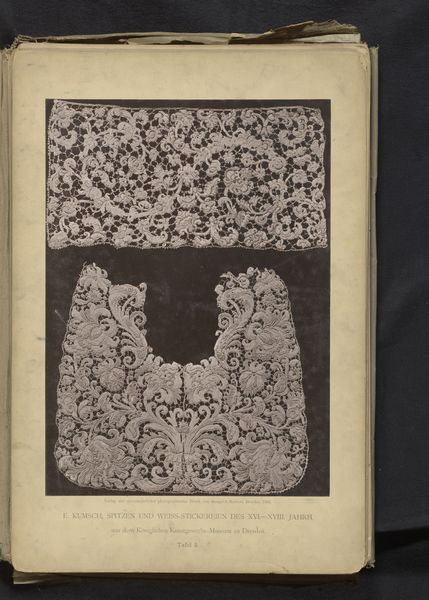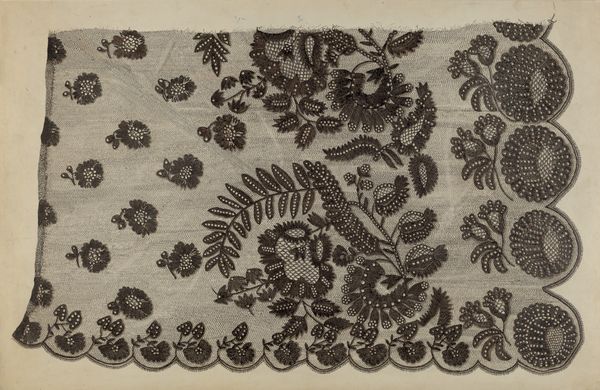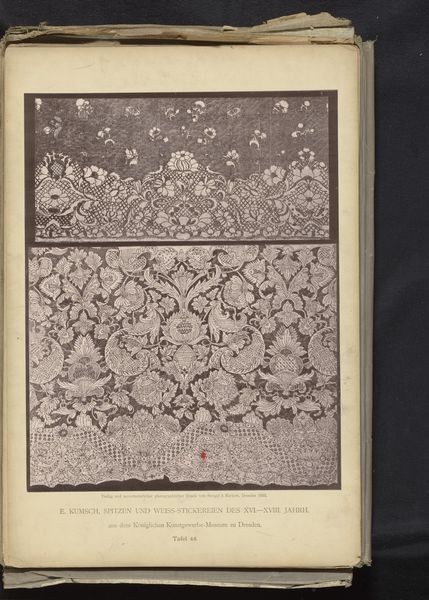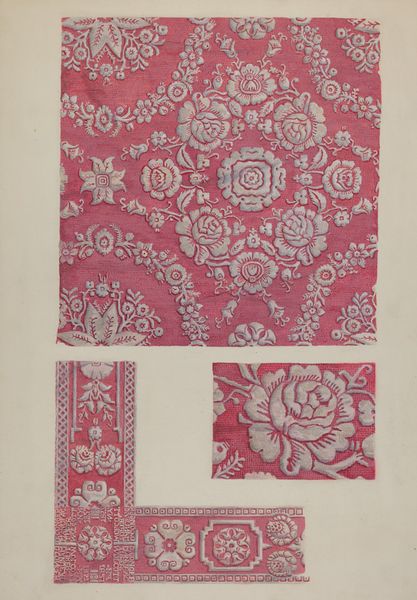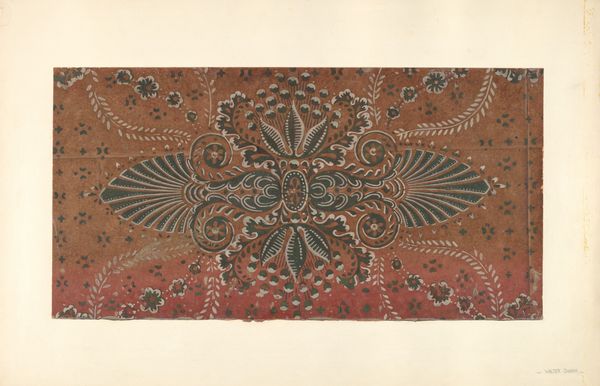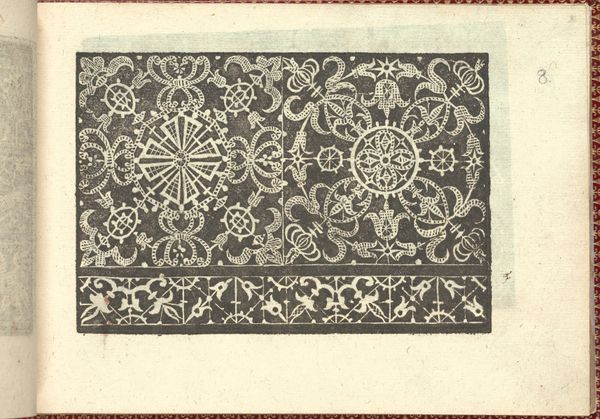
Twee stukken 18de-eeuws Duits borduurwerk uit de collectie van het Kunstgewerbemuseum in Dresden, Duitsland 1888
0:00
0:00
print, textile, engraving
# print
#
textile
#
history-painting
#
decorative-art
#
engraving
Dimensions: height 359 mm, width 279 mm
Copyright: Rijks Museum: Open Domain
These two pieces of 18th-century German embroidery come from the collection of the Kunstgewerbemuseum in Dresden, Germany. Note the intricacy and formal balance achieved through the repetition of shapes and forms. The embroidery uses a limited palette, which emphasizes texture and detail. The play between positive and negative space creates a visual rhythm that guides the eye across the surface. We can interpret the motifs in relation to semiotic systems. Each carefully placed stitch functions as a sign, contributing to the overall message and aesthetic of the work. The formal elements – line, shape, and texture – combine to form a complex language of symbols and meanings. Consider how the interplay of these formal qualities challenges traditional notions of functionality, elevating the craft to an art form. These embroidered pieces can be seen as precursors to the explorations of abstraction and pattern that would define later artistic movements. They invite us to reconsider the boundaries between art, craft, and design.
Comments
No comments
Be the first to comment and join the conversation on the ultimate creative platform.
